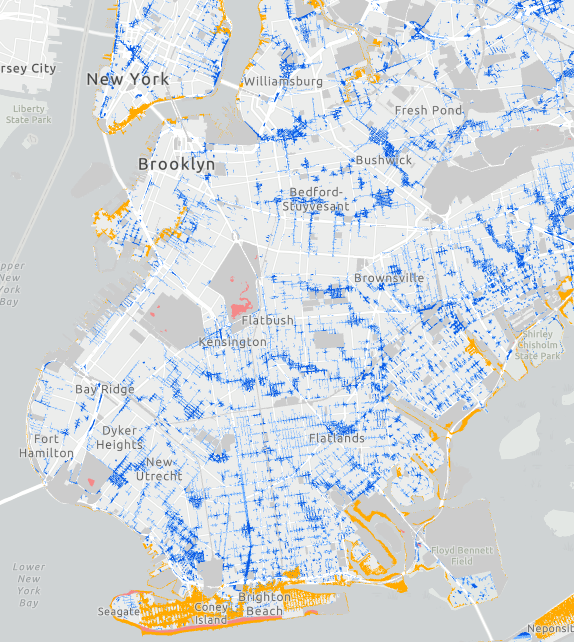Tuesday, Sept. 7: Stormwater, Restaurants, and more

Today we look at how Ida differed from Sandy and some of the reasons why it took many by surprise. If you are a homeowner, check out the map below to see where the storm runoff is worst, and maybe advocate for a rain garden or two around your property as you consider other ways to improve the situation that is otherwise unlikely to get better.
On a bigger scale, it strikes me (again) how badly Southern Brooklyn - and not just coastal communities - needs consistent investment and strong advocacy to get its fair share of infrastructure and resiliency investment. All our south-of-the-park elected officials really need to step it up.

As City Expands Green Infrastructure In Brooklyn, Many Flood-Prone Areas Remain Off The Map
Billy Richling • 5 min read
Even as heavy rainfall and flooding generated by the remnants of Hurricane Ida pounded New York City last week, it was clear the storm differed in a fundamental way from what was previously this city’s most notorious storm, Superstorm Sandy.
That’s partially because Ida brought record-breaking hourly rainfall to the city. But it was also a question of geography. While Sandy was primarily a coastal storm surge event that flooded many low-lying areas along the city’s coast, Ida dropped a deluge of water on neighborhoods far from the waterfront.
That means ensuring the city is better prepared for the next Ida will require different solutions than the billions spent by the city on coastal protections in recent years. The city is working on it—but so far, not all of Brooklyn stands to benefit.
A stormwater risk map published by the city in May shows a huge variety of neighborhoods across the borough at risk of flooding during an “extreme stormwater flood” like what the city experienced last week.
The ongoing resiliency work, however, is concentrated in the north-eastern parts of the borough.

Opinion: Congress Cannot Leave Restaurants and Bars Behind
Sep 7, 2021 • 3 min read
By Rawlston Williams, Owner of The Food Sermon in Brooklyn
"I closed my doors just last week, and I am not sure if or when I will open them again," writes Williams, urging more federal support for restaurants and bars like his.
"Unlike at the beginning of the pandemic, the situation for our industry is far more dire. Our businesses have taken on nearly a year and a half of debt and are dealing with the rising cost of food that continues to eat into our bottom lines.
I have done everything I can to keep my business afloat during the past year and a half. I cut down our menu. My business is operating with a skeletal staff. I’m doing all of the shopping for the restaurant myself to avoid delivery fees. Along with the head chef, I became the dishwasher. But it has not been enough."
Disaster Help:
"Any New Yorker who's doing work on their home, on their business because of the damage sustained on Wednesday night should not have to pay any fees for the permits to do that work," announced Mayor Bill de Blasio this morning signing an executive order to that effect that became effective immediately.
The city is working with the Red Cross to provide those who need shelter, and the Department of Environmental Protection and Sanitation will come and pump out water from the flooded areas for free. Call 311 to set it up.
"The Red Cross is working with us to provide debit cards up to $515 per household just to get some immediate cash in people's hands for just the basics. And the Red Cross will come over to your home and provide that support directly," said de Blasio. "Another organization, Met Council, doing amazing work. They're providing one-time payments of one month's rent for New Yorkers who need it, regardless of immigration status."
How do I get that help? Call 3-1-1.
Anyone who needs direct cash payments from FEMA, up to $36,000 in direct grants, call 3-1-1, or go on the FEMA disaster relief website, disasterassistance.gov to apply for help.
You've made it to the end of today's edition. We love hearing from our readers — please email editor@bklyner.com with any questions, tips, or concerns.




